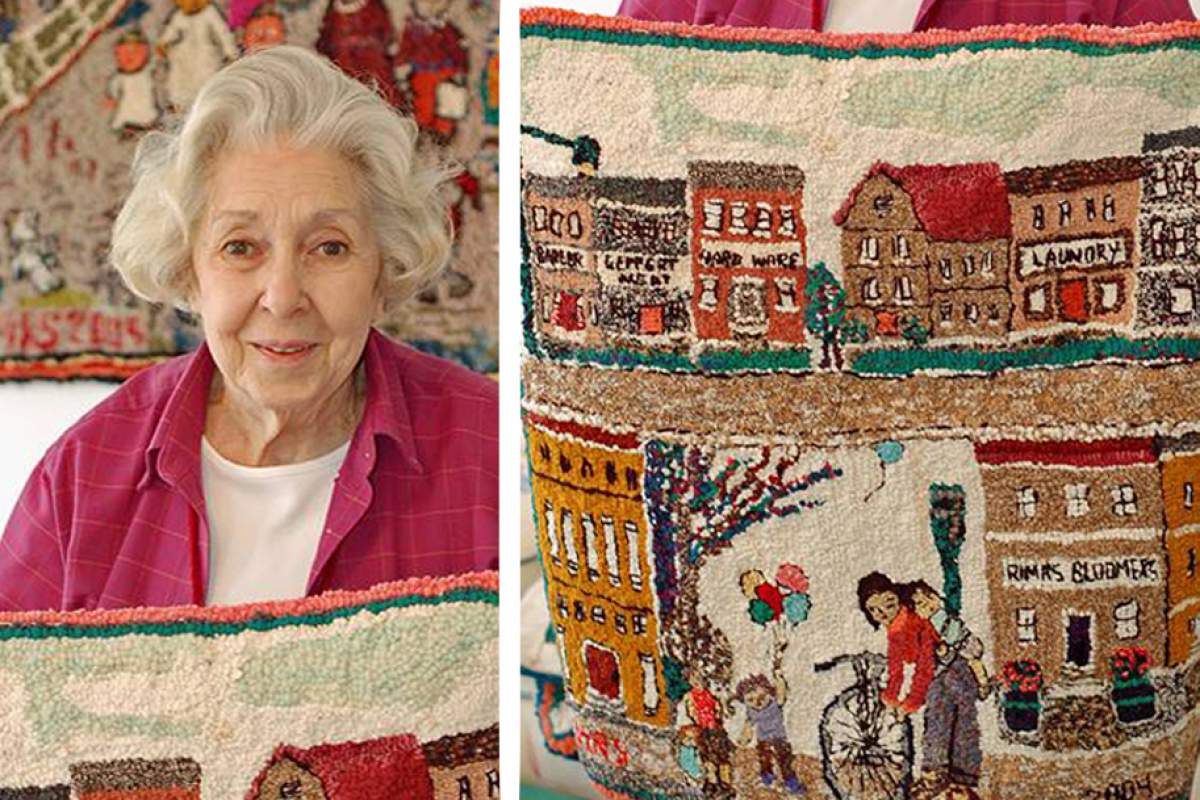
Stitching A Story
Folklorist Jon Kay heard about hooked rug maker Marian Sykes when he received an announcement about a show of hooked rugs in Chesterton, Indiana. He clicked through the images and most rugs were what he always sees from Indiana artists floral designs and New England patterns.
"And then all of a sudden, wow," he says. "There's a scene of some kids throwing snowballs and that looks not like just a general scene. That's somebody's personal memory."
Kay, also the director of Traditional Arts Indiana, called the gallery owners, who put him contact with Sykes. Several weeks later, he was interviewing her in her kitchen.
Sykes moved to Chesterton late in life to be close to her son. The community happened to have a hooked rug club, so at 80 years old, she picked up the new art form.
To her, making hooked rugs is a form of storytelling. She grew up at the Angel Guardian orphanage in Chicago, but her art doesn't depict images from her harsh and abusive childhood. She prefers to portray happy moments.
"One of the first rugs she made was of Little Italy, the place where her family was from," he says. "She created this rug that memorialized the fond memories when she got to leave the orphanage and go and visit her father on a couple weekends of the year." The rug shows a horse and wagon stocked with fruits and vegetables and children playing in the streets.
Sykes now has 20 hooked rugs in her portfolio.
Memorializing Ourselves
Making art helps keep the brain sharp. It taps into both intellectual and creative functions. It draws on physical skills and it encourages social interactions.
I often talk about this with respect to community planning, that creating environments where we can remember ourselves to ourselves is important.
That's according to Phil Stafford, Director of the Center on Aging and Community at the Indiana Institute on Disability and Community.
He says art helps remind us who we are. "I often talk about this with respect to community planning, that creating environments where we can remember ourselves to ourselves is important," he says.
He adds that can be a struggle for older people who relocate or find themselves in environments where their sense of self is not reflected.
Coping With Struggles
The majority of people Kay spoke with started creating art in their 70s or 80s, after an intense life event relocation, retirement or the death of a loved one. It filled quiet moments in the day when they were unable to socialize.
It also allowed them time to reflect on their lives. Stafford calls this Reminiscence Therapy, a technique often employed by art therapists.
"In other words to draw upon their own life history, sometimes to identify those successes, achievements, skills and adaptive behaviors that they've used to cope with struggles in the past that they can recultivate to address struggles they may be encountering in old age," he says.
Kay spoke with painter John Schoolman before he passed away four years ago. Schoolman had always carried a walking stick, but he started painting them after his wife Ada died. "And he told me, 'I had to learn to be alone. I had to learn to find happiness,'" says Kay.
Schoolman told Kay that he was his happiest when he was painting those walking sticks.






